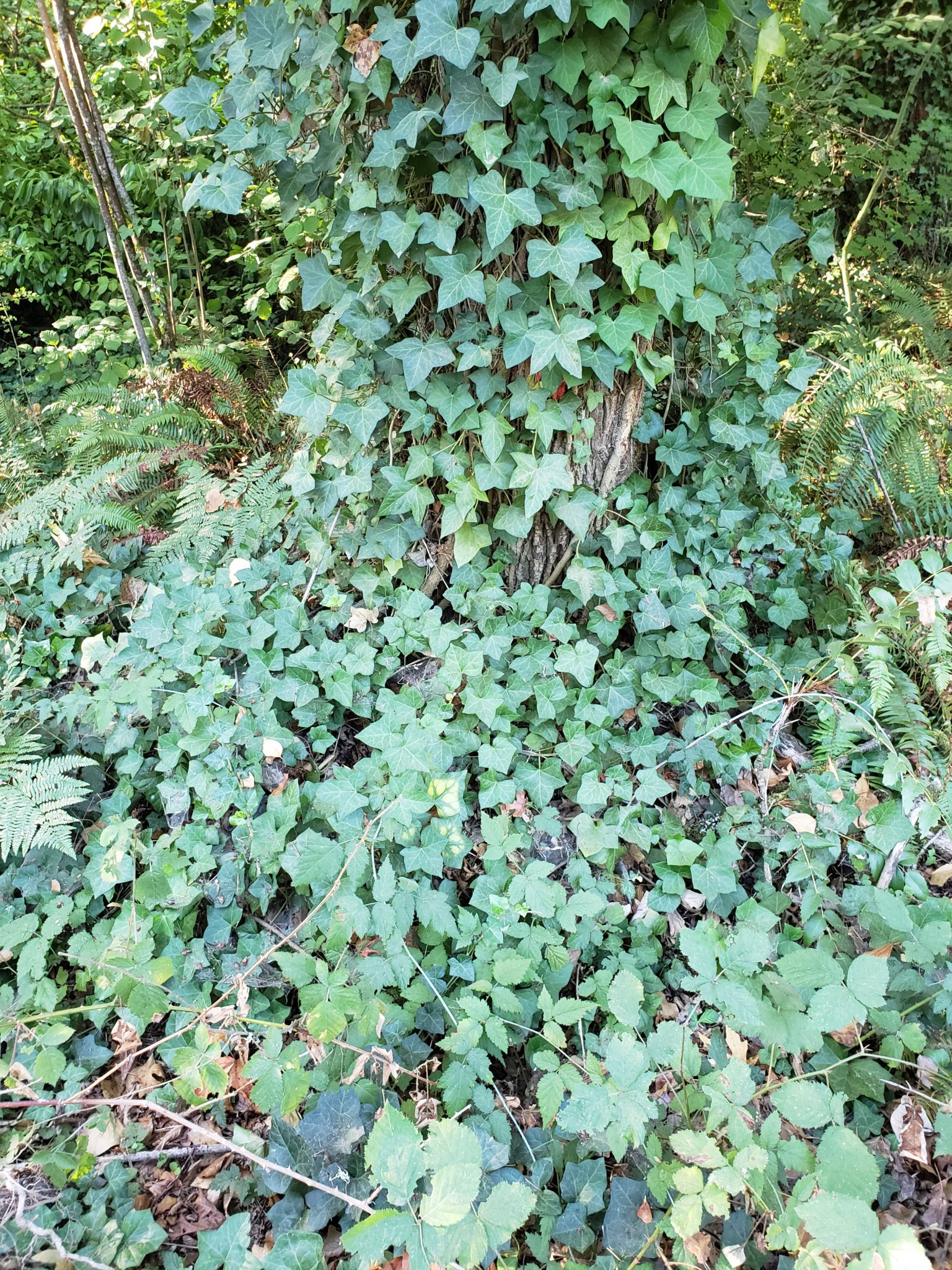
Arborist Advice: Remove English Ivy From Your Trees
English ivy (Hedera spp.) is a non-native plant that was first introduced to the Pacific Northwest as a horticultural plant, but has since spread by seed to dominate huge swaths of our forests and urban gardens. The state of Oregon defines the woody, evergreen English ivy as a noxious weed.
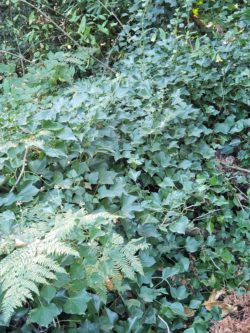
This invasive species forms dense mats on the forest floor and at the base of trees, outcompeting native species.
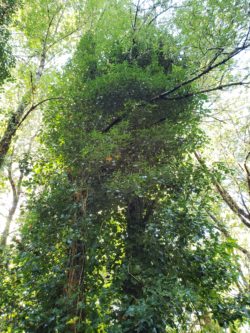
If left unchecked, it will eventually grow up the trunks of trees to the canopy and then grow outward, as seen in the photograph above. The added weight from the ivy makes the tree more susceptible to breakage in wind. English ivy will deny sun to the tree canopy it grows in and can eventually kill shrubs by shading its enshrouded branches. Large-diameter living ivy vines can constrict trunk growth, injuring the bark and creating entry sites for pest and disease. Once mature, the English ivy produces seed-filled berries that birds eat and then distribute the invasive species seeds across the region.
Our arborists recommend removal of all English ivy from your yard, as it can quickly spread. If you have a large amount of English ivy to remove, prioritize removing it from your trees first.
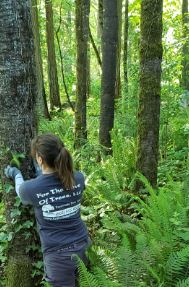
If English ivy has already climbed your tree or shrub, girdle the ivy at the base of the trunk. Because English ivy gets its nutrients and water from the soil at the base of the tree, cutting the vines all the way around the trunk will starve the rest of the ivy growing on the tree bark above.
How to Remove English Ivy Growing On Your Trees
Wearing gloves and long sleeves during removal is recommended for everyone. English ivy can cause contact dermatitis and/or allergic reactions in some people. If you are especially sensitive, consider hiring For The Love Of Trees to remove it for you.
1. Using hand pruners, cut all of the ivy vines around the bark a few inches above the ground and again at chest height, being careful not to damage the tree bark.
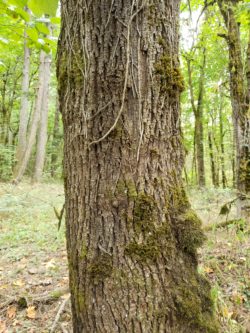
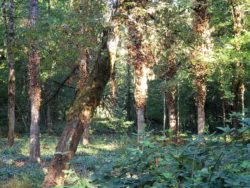
2. Remove the vines between these two cut lines. Some of these mature vines can be several inches thick and need to be pried away from the bark. In the pictures above, the vines were removed from the tree trunks from the ground to chest height.
3. After girdling the English ivy from the tree, remove all English ivy in a six foot radius around the tree. This is most easily done when the soil is wet.
4. You will need to monitor the area throughout the year to ensure that new English ivy plants are not sprouting.
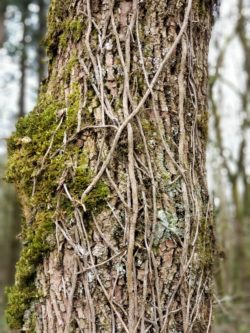
5. As seen in the picture of the tree above, the dead English ivy vines still cling to the bark after being girdled from below. After a few years, as the dead ivy vines become more brittle and the tree trunk continues to add girth, the ivy will slough off. Some find the dead ivy remaining in the tree to be unsightly. An alternative to waiting for it to slough off is to have one of For The Love Of Trees’ arborists climb the tree and pull the ivy from the bark.
Portland Area English Ivy Removal Volunteers
There are several local volunteer organizations working to restore native habitat by eradicating English ivy from our shared natural areas. After removing all of the English ivy from your yard, you can pitch in to free the trees around the Portland area with any of the organizations below:
No Ivy League – Forest Park
Friends of Tryon Creek – Tryon Creek State Park
Hoyt Arboretum Friends – Hoyt Arboretum
City of West Linn – Mary S. Young Park


